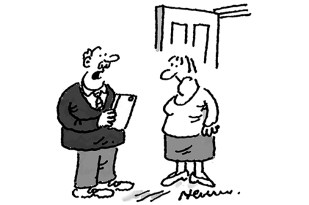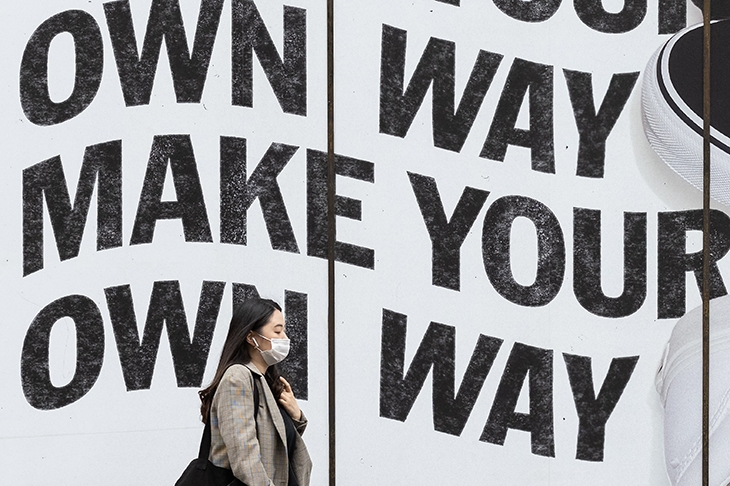The long-awaited easing of restrictions will not be the triumphant moment that many expected back in May. The Delta variant has seen to that. Increasing infection numbers have made the government nervous about the reopening. From 19 July, ministers will be busy trying to look responsible — consciously putting on their masks in crowded spaces — instead of being photographed gleefully enjoying the return of various freedoms.
If case numbers are, as Boris Johnson has predicted they might be, at 50,000 a day and rising on 19 July — and even the double-vaccinated still have to isolate for ten days if they come into contact with an infected person (which will be the case until 16 August) — then that will put a dampener on any celebrations.
The government is trying to brace the public for a surge in cases. Hence Sajid Javid’s warning that infections might hit 100,000 a day, which would be more than a third higher than at any previous point in the pandemic. (Previously, the largest number of new cases was 68,000 on 8 January.) What ministers want to argue, though, is that hospitalisations and deaths are what matter now, not cases. They calculate that even if cases reach 100,000 a day, hospitalisations will remain manageable.

Yet if infections are going to get even close to that figure, can it be sensible to lift restrictions? The voices arguing against this decision will grow louder. The seven-day average of daily hospitalisations has already risen to more than 300. But the best argument for lifting restrictions is that now is better than the alternatives. Another four-week delay would mean that the exit wave would crash into the beginning of the new school term, which would risk further damage to children’s education. If the government waited until every adult had been offered both vaccine doses, England would not open up until the end of September. In this scenario the exit peak would coincide with the beginning of the usual winter pressures on the NHS.
Given that most English schools break up for the summer on 23 July (which should put downward pressure on the virus) and the fact that summer is normally the least difficult period for the NHS, you can see why Johnson has chosen this moment to lift nearly all restrictions. However, it is also clear that the government won’t criticise those who adopt a cautious approach. If Sadiq Khan, the Mayor of London, chooses to insist that face masks are worn on the Tube — as he has the legal power to do — it is hard to imagine that there would be any pushback against that decision from ministers.
The best argument for lifting restrictions is that now is better than the alternatives
Moreover, 19 July will not mark a return to the status quo ante in many ways. Test and Trace will, for a further four weeks, still tell people to stay home if they have come into contact with a positive case. Government models suggest that this should keep cases almost a quarter lower than they would otherwise be. The working from home guidance will go on 19 July, yet there’ll be no immediate rush back to the office. The government won’t push civil servants to return to their desks in large numbers until September at the earliest. Many big corporates will take their lead from Whitehall on this, so commuter trains won’t be anywhere near full by the end of this month, or even next month.
If the lifting of Covid restrictions is successful, then attention will turn to the various backlogs that have built up during the pandemic, most notably in education, the NHS and the justice system. These backlogs will cause all sorts of political problems for the government. Those affected by them will want them cleared with urgency. But there are both capacity and financial constraints to how fast they can be dealt with. One cabinet minister predicts that the public will become so irritated by the government’s failure to sort out these backlogs that it will lead to a Labour revival in the polls and the Tories will fall a couple of points behind; the government trailing in the opinion polls in mid-term would be a sure sign that normal politics had returned.
The resignation of school catch-up tsar Kevan Collins last month over the government’s failure to fund his proposed plan was a preview of the arguments to come. In some ways, though, the education backlog might be one of the easier problems to deal with. There are some early signs that pupils may be recovering some of the lost learning by making better progress now that they are back in schools. (Although there are, obviously, particular issues with hard-to-reach cases.) It will, however, require the return of non-adjusted exams, which won’t happen even next summer, before anyone can be certain about this.
The NHS waiting list will be a much bigger problem, both logistically and politically. It is already more than five million long and it will grow as more people come forward to seek care. Javid this week declared that seven million people did not present for treatment during the pandemic. In Whitehall, it is believed that one in four households will have someone on the waiting list by the autumn.
The danger that a long NHS waiting list poses for the Tory party is obvious. Labour would rush to claim that it was proof that you can’t trust the Conservatives with the health service. Having sought to turn themselves into the high priests of the national religion, the Tories would be left trying to explain why they were struggling so badly to get this backlog cleared — especially since the new Health and Social Care Bill going through parliament gives the government more direct control over the service.
Even if the 19 July reopening does prove to be irreversible, the Tories should not expect the political feel-good factor to last long. The conversation will quickly move on to the other problems that have accumulated during the past 18 months. The question Johnson will have to start answering in the autumn is: what do you intend to do about them?







Comments